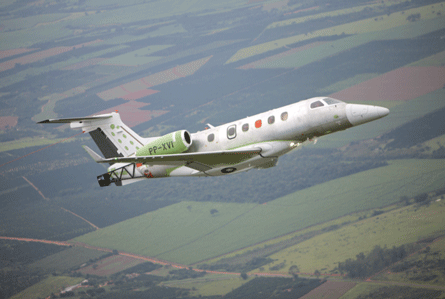Engine temperature constraints are behind a series of special conditions that the US Federal Aviation Administration levied on Embraer before issuing US certification for the Phenom 300 business jet.
The FAA went above and beyond Brazilian authorities in the area of ice protection at altitude, requiring Embraer to address a built-in inhibit for wing and horizontal stabiliser leading edge bleed-air anti-icing protection when the aircraft is flying above 30,000ft (9,140m) or when the air temperature is above a certain temperature.
 |
|---|
Phenom 300 |
"Due to potential over-temperature of the engines, the ice protection system is designed to inhibit [above 30,000ft] even if there are ice accretions on the airframe," the FAA says in the special conditions.
In the cockpit, if the pilot selects the "wingstab" switch to "on" where the inhibits are active, the airframe anti-ice valves will remain off and a caution message, 'A-I wingstab off', is displayed on the cockpit alerting system, "making the pilot aware that the wing and horizontal stabiliser anti-ice system is not operational", says the FAA.
Of the two choices offered - prohibiting flight in icing conditions above 30,000ft or having no restrictions above 30,000ft through a series of suggested flight tests - Embraer chose to prohibit flight in those conditions, with pilots instructed to exit icing conditions.
"Because of the very low frequency of finding such conditions [icing above 30,000ft], the required AFM procedure does not represent a practical restriction to the aircraft," Embraer says.
The Brazilian airframer certificated the six-passenger Pratt & Whitney Canada PW535E-powered twinjet in Brazil on 3 December, followed by FAA certification on 14 December.
Source: Flight International
















